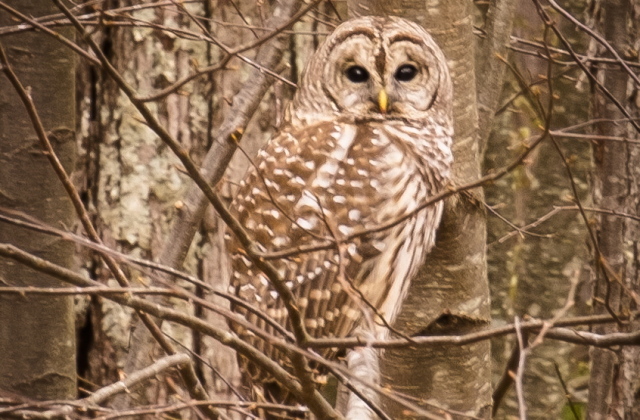The Christmas Bird Count
Citizen Scientists Make Their Mark
By Susannah Wood
On December 14, in the dark and cold of 4 a.m., Ray Belding is going to be in the woods calling to owls. For the next 10 hours or so he and his team will be counting every bird they see for the annual Audubon Christmas Bird Count, hoping for around 80 species. Belding has been heading up the Litchfield Hills CBC for 37 years and has not lost his enthusiasm. He’s not alone. Similar counts will be happening between December 14 and January 5 from Alaska and the Yukon south to the Andes, from the Hawaiian Islands to Bermuda, including one on Aton Forest here in Norfolk where John Anderson has been doing a count since 2010.
The first census occurred on Christmas Day, 1900. Frank Chapman, an ornithologist and member of the young Audubon Society, alarmed over the precipitous declines of bird species, wanted to replace the traditional “side hunt” with a winter inventory. The side hunt was a celebratory day of slaughter in which hunters divided into teams (sides) and went out to kill as many living things as possible. A single hunt in Enosburg Falls, VT in 1896 took down 550 mammals and birds. What began with just 27 people over a hundred years ago now involves over 2300 counts and more than 70,000 participants as of 2013, when more than 64 million birds were tallied.
Each count covers a circle 15 miles in diameter. Teams of three or four people under the leadership of an experienced birder track a route through a section of the circle. To get as accurate a picture as possible, team leaders record how many volunteers participate, distance covered, time spent and weather conditions, as well as numbers of each species seen. While it’s always exciting to see a rarity, the most meaningful aspect of the count is tracking the regulars.
For a long time, the scientific community was wary of relying on counts done by “citizen scientists,” but that attitude changed years ago. While numbers of birds can swing greatly from year to year due to weather and temperature variations, the long history of the counts and the fact that the same areas are covered year after year have yielded data used to chart population trends and shifting winter territories. Christmas counts have helped confirm the recovery of bald eagles and peregrine falcons and provided a way to monitor the effects of West Nile Virus. The data can highlight localized problems such as a drop in wetland quality or improper pesticide application and have provided numerous and irrefutable indications of climate change. Belding notes that when he began the Litchfield count Carolina wrens, red-bellied woodpeckers, and cardinals, all southern species, rarely appeared while now they occur in considerable numbers. (The National Audubon Society reports that about 185 (or 60 percent) of the most widely distributed species have moved an average of 35 miles northward.) Data from June breeding bird surveys together with the Christmas counts have been plugged into climate change models in a recent National Audubon report. That report predicts that by 2050 breeding and wintering territory will have almost completely vanished for 126 species if we continue on the current trajectory.
Litchfield Hills Audubon will have counts close to Norfolk in Goshen, Bantam Lake and West Torrington. Other local bird counts take place at the Sharon Audubon Center on December 14 and at Aton Forest in January. Not all teams go out before dawn; you can sign up for just part of a day as well. Volunteers can conduct counts at their own bird feeders during the count day in their area. Since 2012, the count is free.
Sharon Audubon: 860-364-0520; Litchfield Hills Audubon: Ray Belding, 860-482-4046, hoatzin1@optonline.net; Aton Forest: John Anderson, 860-542-5125, contact@atonforest.org.
PHOTO: This barred owl was photographed by Barbara Perkins next to Rte. 272 North at 10 a.m. on a recent November morning. As the ground fell away from the road, the owl, which was perched about 20 feet up in the tree, was at Perkins’s eye level.

